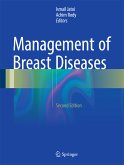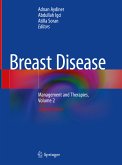Over the last several decades breast cancer management has made great strides in the improvement of oncologic treatment outcomes, particularly so in patients with early stage disease. While wide-spread access to screening resulting in early detection is undoubtedly to be credited for this trend, at the same time, the management of breast cancer has evolved to be an intricate multidisciplinary collaboration between breast imagers, surgeons, medical oncologists and radiation oncologist. As a result, with better mutual understanding of multidisplinary goals and challenges, the treatment strategies have become more individualized, with a great emphasis being placed on the intrinsic disease biology. Furthermore, the indications for neoadjuvant systemic therapy have significantly broadened, with a substantial number of patients with early stage breast cancer being able to take advantage of this strategy to decrease the extent of breast surgery they would undergo at its completion. As such, the management of the axilla in these patients has presented with new challenges as well as with new opportunities to scale down on the extent of local therapy and, consequently, its toxicity.
This text will provide a comprehensive, state-of-the art review of this field, and will serve as a valuable resource for clinicians (surgeons, medical oncologists, radiation oncologists) and researchers with an interest in breast cancer. The book will review novel and evoling strategies in neoadjuvant systemic therapy forn early stage breast cancer, provide new perspectives about appropriate axillary imaging in anticipation of neoadjuvant systemic therapy, and describe new data on innovative surgical techniques and Radiation Oncology concepts designed to deescalate the extent and toxicity of local therapy while insuring oncologic safety. Several landmark clinical trials have been published in the last few years and will be placed in context withrespect to current management. Integration of novel diagnostic and interventional breast imaging, local therapy (surgery and radiation) with contemporary systemic therapy will also be discussed.
This text will serve as a very useful resource for physicians and researchers dealing with, and interested in, this challenging field. It will provide a concise yet comprehensive summary of the current status of the field that will help guide patient management and stimulate investigative efforts. All chapters will be written by experts in their fields and will include the most up to date scientific and clinical information.
Dieser Download kann aus rechtlichen Gründen nur mit Rechnungsadresse in A, B, BG, CY, CZ, D, DK, EW, E, FIN, F, GR, HR, H, IRL, I, LT, L, LR, M, NL, PL, P, R, S, SLO, SK ausgeliefert werden.
Es gelten unsere Allgemeinen Geschäftsbedingungen: www.buecher.de/agb
Impressum
www.buecher.de ist ein Internetauftritt der buecher.de internetstores GmbH
Geschäftsführung: Monica Sawhney | Roland Kölbl | Günter Hilger
Sitz der Gesellschaft: Batheyer Straße 115 - 117, 58099 Hagen
Postanschrift: Bürgermeister-Wegele-Str. 12, 86167 Augsburg
Amtsgericht Hagen HRB 13257
Steuernummer: 321/5800/1497
USt-IdNr: DE450055826
Bitte wählen Sie Ihr Anliegen aus.
Rechnungen
Retourenschein anfordern
Bestellstatus
Storno









